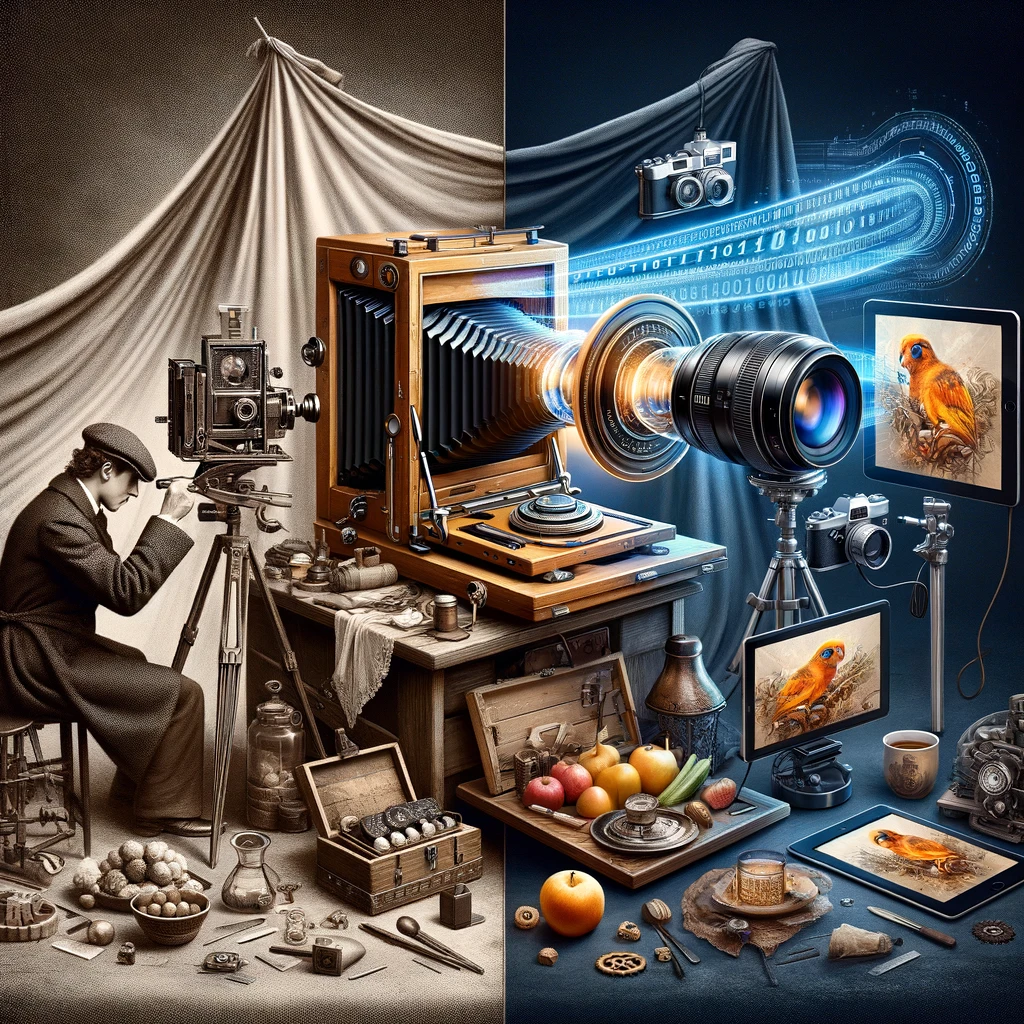How Technology Is Changing the Art of Photography

Photography, the art of capturing moments and turning them into eternal memories, has undergone a remarkable evolution over the years. This metamorphosis has been largely driven by technological advances, from cameras to editing software, transforming not only how we capture images but also how we perceive and share them. This article will explore how technology has changed the art of photography and provide examples and tips on how to adapt to these innovative tools.
The Digital Camera Revolution
The introduction of digital cameras marked the beginning of a new era in photography. Digital cameras have democratized photography, making it accessible to amateurs and professionals alike. No longer is it necessary to wait to develop a roll of film to discover if the capture was successful; now, with just a glance at the camera’s screen, we can know immediately. Moreover, the ability to store thousands of photos on a single memory card has allowed photographers to experiment without worrying about the cost of film and development.
Example: The Canon EOS series and Nikon D cameras have led this revolution, offering not only high image quality but also features like burst shooting and high-definition videos, opening new frontiers for photographic creativity.
The Impact of Smartphones
Smartphones have taken photography to an entirely new level. With increasingly powerful cameras, these devices have made photography even more accessible and convenient. The ability to capture, edit, and share photos instantly has transformed how we interact with our images and the world.
Example: The Apple iPhone and Samsung Galaxy series are pioneers in this field, incorporating technologies like computational photography and HDR, which allow for impressive captures even in low-light conditions.
Advanced Editing Software
Editing software has revolutionized photographic post-production, allowing photographers to create artworks from ordinary photographs. Programs like Adobe Photoshop and Lightroom offer sophisticated tools for adjusting colors, lighting, and composition, in addition to image manipulation capabilities that defy imagination.
Example: Photoshop’s Content-Aware Fill feature allows users to easily and naturally remove unwanted objects from a photo, while Lightroom provides exceptional color management to ensure that photos look perfect on any device.

Tips for Adapting to Photographic Technology
Continuous Education: Stay up to date with the latest trends and technologies. Platforms like Udemy and Coursera offer courses ranging from the fundamentals of digital photography to advanced editing techniques.
Practice: Experiment with different equipment and software. Practice not only improves your skills but also helps you understand which tools best suit your style.
Share and Get Feedback: Use platforms like Instagram and Flickr to share your work and receive feedback. The photographic community is an excellent source of inspiration and learning.
Explore Mobile Photography: Don’t underestimate the power of your smartphone. Explore photography and editing apps to discover new ways to capture and manipulate images.
Smart Investment: Invest in equipment and software that fits your needs. You don’t need the most expensive camera to take great photos, but a good investment in key tools can make a big difference in your work.
The Future of Photography
Looking to the future, we can expect technology to continue transforming the art of photography. Artificial intelligence and augmented reality promise to open new dimensions in how we capture and interact with images. Photography, in its essence, will remain a form of art and expression, but the way we practice and appreciate it will continue to evolve with technology.
In conclusion, technology has radically transformed the art of photography, from the way we capture images to how we edit and share them. Adapting to these changes requires an open mind and a continuous commitment to learning and experimentation. By embracing these tools and technologies, we can explore new creative frontiers and take our passion for photography to new heights.